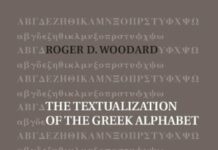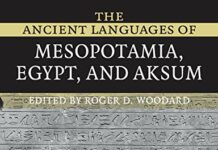
Ebook Info
- Published: 2006
- Number of pages: 296 pages
- Format: PDF
- File Size: 6.25 MB
- Authors: Roger D. Woodard
Description
In Indo-European Sacred Space, Roger D. Woodard provides a careful examination of the sacred spaces of ancient Rome, finding them remarkably consistent with older Indo-European religious practices, as described in the Vedas of ancient India. Employing and expanding on the fundamental methods of Emile Benveniste, as well as Georges Dumezil’s tripartite analysis of Proto-Indo-European society, Woodard clarifies not only the spatial dynamics of the archaic Roman cult but, stemming from that, an unexpected clarification of several obscure issues in the study of Roman religion. Looking closely at the organization of Roman religious activity, especially as regards sacrifices, festivals, and the hierarchy of priests, Woodard sheds new light on issues, including the presence of the god Terminus in Jupiter’s Capitoline temple, the nature of the Roman suovetaurilia, the Ambarvalia and its relationship to the rites of the Fratres Arvales, and the identification of the Sabine god Semo Sancus. Perhaps most significantly, this work also presents a novel and persuasive resolution to the long-standing problem of agrarian Mars. Roger Woodard is Andrew V. V. University of Buffalo (The State University of New York). Among his many books are Greek Writing from Knossos to Homer and The Cambridge Encyclopedia of the World’s Ancient Languages, a volume in the Traditions series, edited by Gregory Nagy.
User’s Reviews
Editorial Reviews: Review “Woodard fashions a point-by-point comparison between classical Latin and Greek accounts of certain archaic Roman ceremonies that demarcate, celebrate, and hallow civic space . . . and some of the many painstakingly detailed prescriptions for sacrifice in which the brahmanic literature of ancient India abounds.”–Indo-European Studies Bulletin”A stimulating, thought-provoking, and structured account of what can appear to be random and inexplicable details in the synchronic system, a way of thinking ‘outside the box’ of a single culture.”–Journal of the American Oriental Society”A great and beautiful book.”–History of Religions Book Description Explaining the survival of Proto-Indo-European cultic spaces in Vedic India and ancient RomeIn Indo-European Sacred Space, Roger D. Woodard provides a careful examination of the sacred spaces of ancient Rome, finding them remarkably consistent with older Indo-European religious practices as described in the Vedas of ancient India. Employing and expanding on the fundamental methods of Émile Benveniste, as well as Georges Dumézil’s tripartite analysis of Proto-Indo-European society, Woodard clarifies not only the spatial dynamics of the archaic Roman cult but, stemming from that, an unexpected clarification of several obscure issues in the study of Roman religion.Looking closely at the organization of Roman religious activity, especially as regards sacrifices, festivals, and the hierarchy of priests, Woodard sheds new light on issues including the presence of the god Terminus in Jupiter’s Capitoline temple, the nature of the Roman suovetaurilia, the Ambarvalia and its relationship to the rites of the Fratres Arvales, and the identification of the “Sabine” god Semo Sancus. Perhaps most significantly, this work also presents a novel and persuasive resolution to the long-standing problem of “agrarian Mars.” About the Author Roger Woodard is Andrew V. V. Raymond Professor of the Classics and professor of linguistics at the University of Buffalo (The State University of New York). Among his many books are Greek Writing from Knossos to Homer and The Cambridge Encyclopedia of the World’s Ancient Languages. Read more
Reviews from Amazon users which were colected at the time this book was published on the website:
⭐I read this book for a religious study program I am taking and I was not disappointed with the quality of the work. It is thick (and I am not talking the number of pages). There were many times I had to stop and process what I had read and when I did the detailed breakdown of the book for my classes, I would pull multiple things off of a single page. If you are into classical religious studies or pagan reconstruction studies, you have to read this book.With that being said, there are parts where there are French quotes with no English translations and he used a lot of Latin in the book (all Latin quotes are translated, thank goodness). If you have a solid understanding of both of these languages, you will be fine. I had to stop in places and translate into English what I had read. Also, he would reference various area in the book throughout the text while you read, so if you followed the references, you would end up jumping around quite a bit. If it wasn’t for that, I would have given the book 5 stars easily!
⭐I bought this book because I was intrigued by its basic topic: sacred space in ancient Roman religion and Vedic practice. Sadly, this book is so scholarly that it’s virtually unreadable. I’m slogging through because there are so many interesting tidbits on Roman religion, but it’s like pulling teeth. Woodard constantly writes an interesting paragraph and then rather than go on, he refers the reader to another chapter and another paragraph.There is interesting material in this book about the Ambarvalia and the Arval Brothers and also gods such as Terminus, but it takes self-discipline to get to it. Oh, and so far not much mention of goddesses except occasionally when men feature in their religious rites.To sum up, this book is disappointing, but I still intend to wade through to the end.
⭐The value goes beyond Roman, and is applicable to Germanic and Celtic scholars as well. I thoroughly enjoyed his defense of Dumezil. Further, I enjoyed his clarification on the comparative method; something that devotees of Joseph Campbell should take note of.
⭐Great research, great reading; makes our distant ancestors come to life in the very space that they held as most important.
Keywords
Free Download Indo-European Sacred Space: Vedic and Roman Cult (Traditions) in PDF format
Indo-European Sacred Space: Vedic and Roman Cult (Traditions) PDF Free Download
Download Indo-European Sacred Space: Vedic and Roman Cult (Traditions) 2006 PDF Free
Indo-European Sacred Space: Vedic and Roman Cult (Traditions) 2006 PDF Free Download
Download Indo-European Sacred Space: Vedic and Roman Cult (Traditions) PDF
Free Download Ebook Indo-European Sacred Space: Vedic and Roman Cult (Traditions)





